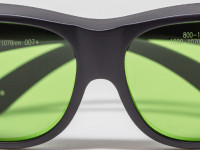How sustainably does a laser work?
Investing in a laser machine from JustLaser is not only easy on the wallet, but also on the environment.
Financial savings potential and tapping new potential are often at the top of the decision list in the procurement process of a laser engraver or laser cutter. But the issue of sustainability also plays a major role, because laser technology can also conserve resources.
Investing in a device from JustLaser is not only easy on the wallet, but also on the environment. Laser technology has great advantages in terms of sustainability:
Long service life
JustLaser machines are produced with high-quality components and are designed for reliable and long-lasting use. Due to the laser elements used, use over many years is guaranteed and not only ensures a financially profitable customer investment, but also protects the environment.
Low maintenance
Our laser machines are extremely solid and yet technically constructed in such a way that all individual components work perfectly together. This results in long and therefore efficient maintenance intervals and hardly any necessary component changes. The laser sources used are extremely durable and maintenance-free. In addition, we offer a supporting spare parts management with our technical service, which also enables sustainable and long-lasting operation.
Consumables
The JustLaser laser engravers and laser cutters have been designed to guarantee efficient and low power consumption, resulting in the lowest possible energy consumption. There is no heat dissipation that needs to be processed and, thanks to the exhaust air systems used, any suspended particles released are accurately and effectively collected and directed into filter systems. In the large-format laser machines such as the JustCut Metal Laser Cutter and the JustLaser Large Laser Cutter, closed water circuits are used for the cooling systems. This means that water is used in a low-loss and resource-saving manner and is not consumed unnecessarily.
No operating materials
No additional operating materials such as lubricants, lacquers, oils, etc. are required for processing materials.
No material wear
Not only are the laser machines themselves designed in such a way that they wear out few raw materials through component replacement, but there is also significantly less wear and tear in the operation itself compared to other technologies. To put it simply, "concentrated light" is used for laser engraving, laser cutting or laser marking. This means that there is no wear on tool materials during material processing, as is the case with milling, embossing or conventional engraving, for example. This also means that no tool change is necessary.
Minimal waste
With a laser, a wide variety of materials can be cut extremely precisely, even with the smallest geometries - and with the highest cutting quality. This means that the materials to be processed can be handled with maximum utilisation of the material sizes. Another very big advantage of laser technology is that a laser is extremely true to its parameters. This means that an engraving or cutting parameter that has been found once can be processed once or even thousands of times. The laser always works exactly as it did the last time. These points guarantee an absolute minimisation of waste.
Indirect savings
Potentials that do not arise directly on the machine at the operator or at the place of use of the lasered material should not be underestimated either. Laser engravings are durable and long-lasting, unlike prints, labels or similar. This means that additional materials can be saved just as much as chemical additives (in the case of prints), carrier materials etc. There is less waste and at the same time the inscription is durable and cannot be wiped off.



